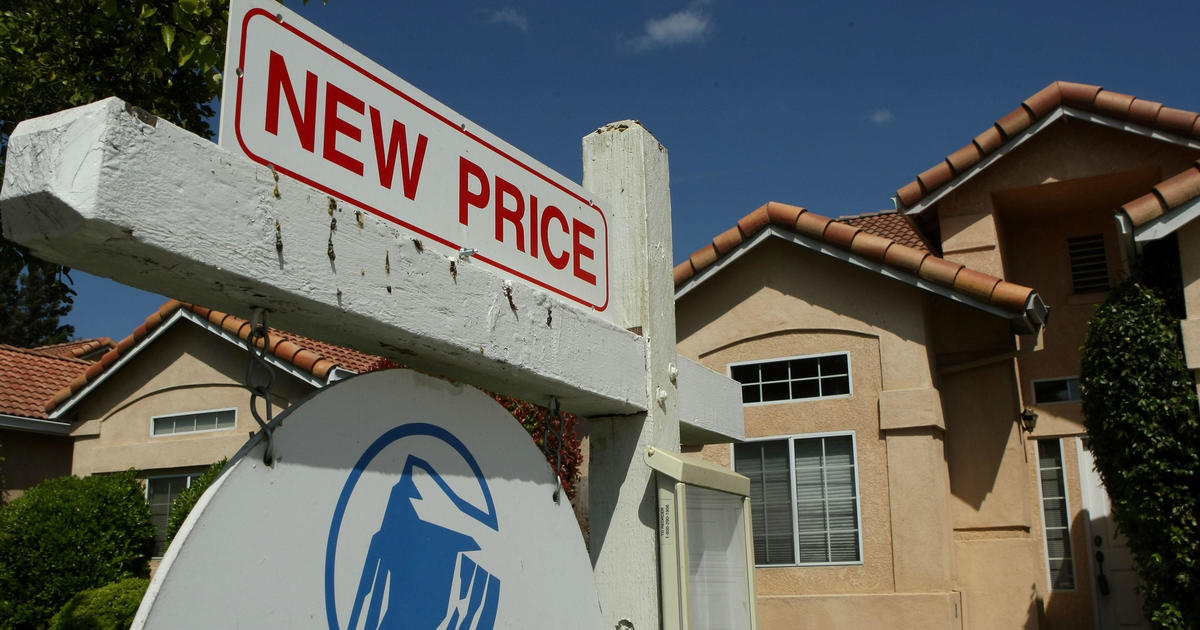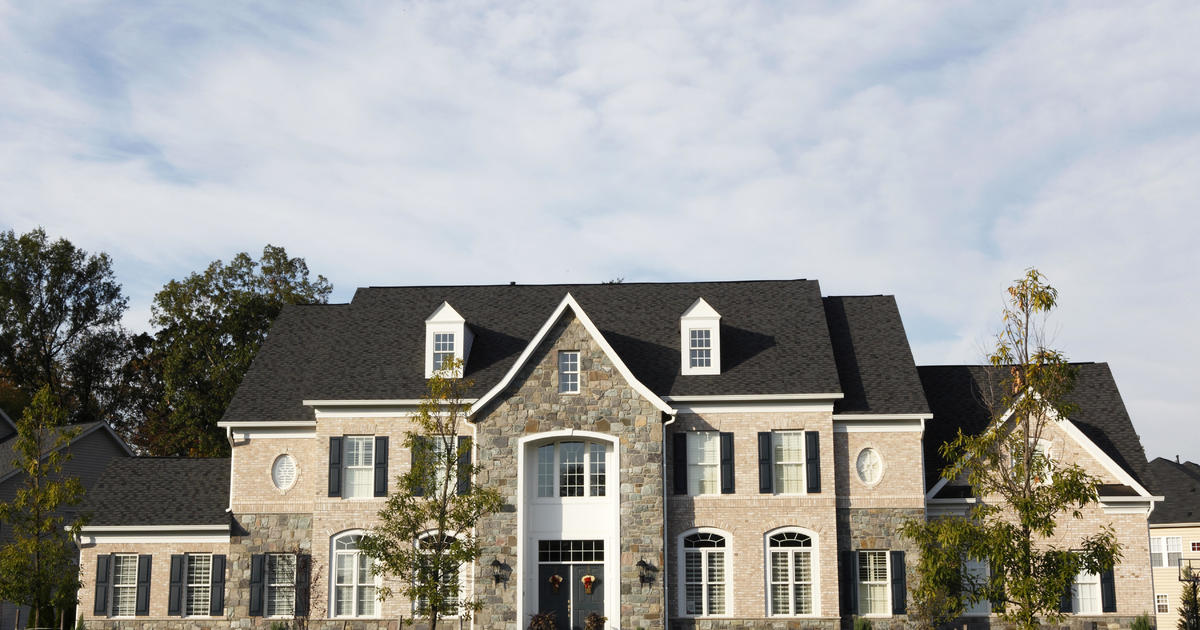How empty office buildings are setting cities on a doom loop
Despite some large companies calling for a return to the office following the pandemic, remote work has taken root with a large segment of the workforce, leaving office spaces empty and real estate executives reeling.
But it's not just the real estate industry that is impacted. The effects of vacant office space could ripple through the economy because many buildings are financed through short-term loans from banks. If real estate firms are unable to make rent money from commercial tenants, they may default on their loans, increasing the risk for banks.
That's what led real estate company RXR to default on a $240 million bank loan at 61 Broadway in New York City. With half his office tower sitting vacant, RXR chief executive Scott Rechler says it was "time to face reality."
"This post-COVID world of higher interest rates, the changing nature of how people work and live, we're not going back to where we were," Rechler said. "And it's going to be turbulent."
What's happening in office buildings
With remote and hybrid work hardening from trend to new normal, office occupancy rates are at an all time low. More than 95 million square feet of New York City office space is currently unoccupied –the equivalent of 30 Empire State Buildings.
As tenants shrink their office footprint, office landlords are confronting the fact that some of their buildings have become obsolete, if not worthless. By some estimates the price of office buildings has tanked by as much as 40% since the pandemic. At Columbia Business School, real estate professor Stijn Van Nieuwerburgh has modeled out the impact of hybrid work on pricing. He calls it a "train wreck in slow motion."
"And this is just the beginning. And the reason it's just the beginning is because there's a lot of office tenants that have not had to make an active space decision yet," Van Nieuwerburgh said. "'Do I want to renew this space? Do I want to vacate? Maybe I sign a new lease for half as much space.' This is what tenants have been doing for the last three years."
Marc Holliday, CEO of SL Green Realty — New York's biggest office landlord, and 60 Minutes' landlord — considers work from home to be "one of the biggest societal problems we're facing right now."
"I think that it's bad for business. It's bad for cities. It's bad for people," he said.
Refinancing no longer a given for office loans
Work-from-home has also been a drag for real estate companies like SL Green, who have seen shares tumble since the pandemic, even as they pay down their building loans. Commercial real estate is a world built on loans –big ones– and the assumption is that those loans can be refinanced, with little friction, every 5 to 10 years, but that's not the case anymore.
To complicate matters for office building owners, interest rates have spiked to historic highs, and now the mortgage is coming due: $1.5 trillion in commercial real estate loans expire in the next two years, according to analysts.
Banks used to be willing to lend real estate companies more for buildings, Van Nieuwerburgh said. Now office owners will be forced to either pay out of pocket to make up the difference or walk away.
"And to make matters worse, interest rates are now much higher. Interest rates have essentially doubled," he said. "So the cost of that new mortgage, even if you can get one, will be much higher."
Office building troubles bleed into the banking sector
Commercial real estate plays a huge role in the typical bank's business, according to Van Nieuwerburgh.
"And I'm talking mostly about these smaller and medium size, maybe regional banks," Van Nieuwerburgh said. "They have a lot of exposure. That is their bread-and-butter activity. About 30% of all their loans are commercial real estate loans."
Van Nieuwerburgh sees it as a potential crisis.
In December, nationwide office loan delinquency rates were around 6% — almost four times what they were a year ago — but banks have been reluctant to write down those losses.
David Aviram from Maverick Real Estate keeps tabs on the debt on every office building in New York City and buys distressed debt on the cheap. He says New York is awash in billions worth of commercial real estate loans at risk of not being paid.
"We know that there's this buildup of bad debt in the system, but it's not being dealt with just yet," he said. "And it's in large part because the banks have been kicking the can down the road as best they can, trying to push this off as far as they can."
What does that mean?
"It means that banks are entering into extensions on a lot of their bad loans, which essentially changed their classification from a nonperforming loan, a loan that's in distress, to a performing loan, a healthy loan, even though they haven't received a pay down on the loan and the collateral value on that loan continues to drop," Aviram said.
The "urban doom loop"
It all makes for a familiar tune –a downturn in real estate, made worse by bad loans, contaminates banks and, potentially, the entire economy. Echoes of the global financial crisis of 2008 are hard to ignore. Whether the trouble with offices ends in a simple pricing correction or becomes a systemic crisis, likely there's pain coming for building owners, banks and for cities themselves.
"In the long run, property taxes on those buildings will also fall by 40%. And these commercial property tax revenues are an important component of the budget of local governments, which means less money for police departments, public safety, less money for sanitation, trash collection," Van Nieuwerburgh said. "And some people are going to decide that, you know, the quality of life has deteriorated too much and they want out. And, in fact, that's what we've seen."
According to Van Nieuwerburgh, America's 10 largest cities have lost about 2 million residents in the last three years. That also means their tax base is smaller.
"And now the cycle continues," Van Nieuwerburgh said. "And we end up in something that we have called an urban doom loop."
Searching for solutions
In an effort to bring new life to empty office buildings, some developers, like Tony Park and Elad Dror of PD Properties, are working to turn their buildings into apartments that will rent at market price. But less than half of New York office space is zoned for conversion.
Before the pandemic, the pair had been eyeing a building near New York City's Penn Station. They didn't get very far, though they offered the owner $80 million. In September, Park and Dror got the building for less than half their original offer. Now they have plans to convert the place into a residential building.
"Anything that is not an office," Park said.
For Van Nieuwerburgh, the reimagining of office space can, and should be ambitious, combining public and private money and ideas for what to do with old office space.
"We no longer have to live where we work," Van Nieuwerburg said. "And that's a very transformational idea. And I believe society is only at the beginning of realizing the full potential of that idea."



